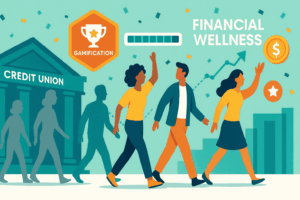We love automation in personal finance. It’s a fantastic way to get rid of all of the little decisions you have to make every day and can keep you on track to your goals. Set it and forget it. One decision that eliminates 100 decisions.
The areas of personal finance that automation addresses are the regular plannable transactions around saving, investing, and paying down debt. Including automating the payment of your credit card and student loan bills. Despite the power of automation, a Charles Schwab survey found that 74% of Americans are not comfortable automating their day-to-day finances. That equates to about 194 million US adults. Yet, these are the easiest pieces of personal finance to automate.
With automation’s growth in the personal finance space, we still aren’t seeing better outcomes as savings rates as of October 2021 are at a measly 7.3% and there are still 194 million people who are not comfortable automating their daily financial lives.
Automation as our personal financial savior is a myth
With this perspective, it’s easy to see why automation hasn’t yet and is not positioned to solve all of our personal financial woes.
Beyond the hesitancy, the idea of automating all of our personal finance decisions is ludicrous. Read on to explore the reasons why automation can’t always be the answer to every personal finance question.
Big life decisions
First, automation only addresses one small piece of financial decision-making – regular transactions. What can’t be automated are the big decisions that lead to those transactions. For example, how much is too much to spend on a wedding? Or indeed, is it worth having a big traditional wedding at all? Perhaps instead you want to just go to the courthouse and use the cash you would have spent to buy an investment property.
Major life choices can’t be made in a spreadsheet, and have to take into account the emotions as well as the numbers. What are people’s likes, dislikes, preferences, dreams, and emotions when it comes to money? Those are important factors when recommending how much maternity or paternity leave a new parent should take. Should that new parent with limited savings contribute to a 529 plan, their 401k, buy a safer car for their child or put a downpayment on a new house? We can’t always find these answers with logic alone.
Automation is a privilege
Automating your personal financial life is a privilege. It is inaccessible to many people, not because they don’t understand automation or have access to the tools, but because it isn’t practical. If you don’t earn enough money to make discretionary purchases, you have an unexpected loss in income, take a pay cut, or simply change your lifestyle, automation breaks down and is hard to adjust. There is a minimum income level to expense obligations for being in a position to automate your day-to-day financial life. Perhaps in the future, Ostrich will research what that income level is.
Now the argument may be to create more robust and better automation tools to handle those situations, but it’s foolish to think that is close to occurring or that we can factor in every scenario.
Automation handicaps the ability to learn personal finance
As human beings, we learn by doing. Many financial literacy programs fail because learning and doing are treated as being mutually exclusive. Yet we fully accept that for kids the only way to learn how to walk is by trying. You will fall, you will fail time and again, but eventually, you’ll start walking. Currently, when it comes to personal finance we throw the baby to the wolves and tell it to start running. This is obviously a broken approach that you’ll have a hard time finding any advocates for.
That being said, the pendulum is beginning to swing in the other direction. According to a World Bank and S&P Global study, 57% of American adults have a basic understanding of financial concepts. We are now proclaiming that the solution is that giving the baby a college-level textbook on the history, theory, and physics of walking will solve our problems. But this is too idealistic to be practical. Just because I conceptually understand how to hit a 95 MPH fastball thrown to me doesn’t mean I can or will. The best way to teach people is by having them take action. Automation does not encourage adults to learn by doing.
Single point of failure
The fourth area financial automation falters in is that there is a single point of failure. If you make one decision once and forget about it, you will be better off as long as the automation stays running. But what happens when the system fails? You lose a job. You get a divorce. Your child gets sick and you cut back your income and hours to spend time with them. Your bank updates their terms of services and now you are being charged fees. Or there’s a reduction in the interest rate your investments are making that you didn’t plan for. By removing the need to think about personal finance decisions, you create a vulnerable population and single points of failure.
Joy, Happiness, & Identity
The fifth-way automation fails in personal finance is that it does not factor in joy, happiness, and our identities to our financial decision-making. 95% of our spending decisions are emotional according to HBS professor Gerald Zaltman. While automation may nudge us in the right direction it cannot automate our emotionally driven spending. The best financial model can tell you to put that extra $500 this month to your highest interest rate debt but fail to factor in that your elderly father was just diagnosed with stage 4 cancer and that $500 is better spent on a plane ticket home to see him for the holidays.
What we do with our hard-earned money reflects back our values, identity, and priorities.
Lagging indicator
The sixth way automation fails is in many cases it’s retroactive and a lagging indicator. Hooking up to a dashboarding or budgeting app that categorizes your spending is nice, but it doesn’t reach you at the decision point. Say you decide to cut out spending on fast food because it also ties to your weight loss goals. Automation will only shame the user after they’ve already made a decision that wasn’t aligned with those goals.
Who wants to open up a budgeting app that shames them and reminds them of how much they’ve failed?
That’s assuming they even decide to open up that app at all after knowing they missed their goal.
Summarizing Automation in Personal Finance
Using automation in your personal financial life is a smart thing to do. Automation can lead to better financial outcomes in the long term. Yet, the automation of our financial lives alone will not solve economic inequality, financial stress, nor improve financial wellness equitably. To truly address these problems we have to think outside the spreadsheet and algorithms. We must focus on real people!
Read more about automating personal finance.














